
IMAGING SCIENCE JOURNAL
metrics 2024
Navigating the Evolving Landscape of Imaging Technologies
Introduction
Imaging Science Journal, published by Taylor & Francis Ltd, serves as a vital resource for researchers and professionals in the fields of computer vision, pattern recognition, and media technology. With an ISSN of 1368-2199 and an E-ISSN of 1743-131X, this journal has been fostering scholarly dialogue since its inception in 1997, with a converged content offering extending through 2024. Its categorization in Quartile 4 in Computer Vision and Pattern Recognition and Quartile 3 in Media Technology highlights its relevance and contributions to emerging trends in these domains. Although it ranks 36th in the Engineering - Media Technology category and 96th in Computer Science - Computer Vision and Pattern Recognition, its innovative research and insights continue to attract the attention of scholars dedicated to advancing knowledge at the intersection of imaging technologies. Offering versatile access options, this journal is essential for students, researchers, and professionals aiming to stay informed and engaged in the rapidly evolving landscape of imaging science.
Metrics 2024
 0.18
0.18 1.10
1.10 1.40
1.40 30
30Metrics History
Rank 2024
Scopus
IF (Web Of Science)
JCI (Web Of Science)
Quartile History
Similar Journals
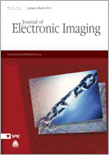
JOURNAL OF ELECTRONIC IMAGING
Connecting Ideas, Inspiring Innovations in Electronic Imaging.JOURNAL OF ELECTRONIC IMAGING, published by SPIE - Society of Photo-Optical Instrumentation Engineers, stands at the intersection of cutting-edge research in various fields including Atomic and Molecular Physics, Optics, and Computer Science Applications. With an ISSN of 1017-9909 and an E-ISSN of 1560-229X, this esteemed journal has been a significant contributor to the scientific community since its inception in 1993, continuing its mission to provide a platform for innovative research through 2024. Operating from its headquarters in Bellingham, WA, United States, the journal is currently categorized in the third quartile for major domains such as Electrical and Electronic Engineering, indicating a robust engagement with contemporary topics and advancements. Although it is not an Open Access journal, it remains accessible to a wide audience of researchers, professionals, and students through institutional subscriptions. With its impactful contributions and a comprehensive view of electronic imaging, this journal not only serves as a vital resource but also drives discussions that shape the future of this rapidly evolving field.
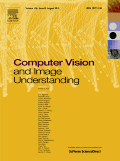
COMPUTER VISION AND IMAGE UNDERSTANDING
Advancing the Frontiers of Vision and UnderstandingCOMPUTER VISION AND IMAGE UNDERSTANDING is a leading academic journal published by Academic Press Inc, Elsevier Science, dedicated to the advancement of the fields of computer vision, image understanding, and pattern recognition. Since its inception in 1993, this esteemed publication has garnered a reputation for excellence, achieving a remarkable Q1 ranking in the categories of Computer Vision and Pattern Recognition, Signal Processing, and Software as of 2023. With its robust impact factor and high visibility in the scientific community—ranking #22 out of 106 in Computer Vision and Pattern Recognition and #27 out of 131 in Signal Processing—this journal serves as a vital resource for researchers, professionals, and students looking to explore and contribute to state-of-the-art developments. Although it does not operate under an Open Access model, its rigorous peer-reviewed content ensures quality and relevance in a rapidly evolving technological landscape. The journal’s commitment to fostering innovation makes it an essential tool for anyone engaged in the study and application of computer vision technologies.
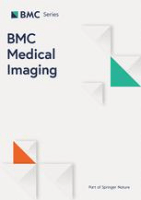
BMC MEDICAL IMAGING
Transforming Medical Imaging with Collaborative Research Insights.BMC Medical Imaging is a premier open-access journal dedicated to advancing the field of radiology, nuclear medicine, and imaging technologies. Published by BMC in the United Kingdom, this journal serves as a vital resource for researchers, clinicians, and students, fostering a collaborative environment for sharing innovative findings and methodologies in medical imaging. With a commendable impact factor and an impressive Scopus ranking within the top 35% of its category, BMC Medical Imaging provides a platform for high-quality research to be disseminated widely and freely since its inception in 2001. The journal aims to cover a diverse array of topics, from advanced imaging techniques to their clinical applications, enhancing the understanding and effectiveness of diagnostic practices. By contributing to the body of knowledge and facilitating open access to research, BMC Medical Imaging plays a pivotal role in shaping the future of medical imaging and improving patient care.

VISUAL COMPUTER
Connecting Research, Design, and VisionVISUAL COMPUTER is a prestigious journal published by Springer, focusing on the dynamic fields of computer graphics, computer-aided design, computer vision, and software. Established in 1985, this interdisciplinary journal serves as a vital platform for sharing innovative research, applications, and developments crucial to the advancement of visual computing technologies. With a notable Q2 ranking in various categories, including Computer Graphics and Computer-Aided Design, and Computer Vision and Pattern Recognition, VISUAL COMPUTER demonstrates a solid impact within the academic community, marked by its Scopus rankings that reflect its significant contributions to the field. While the journal does not offer open access, it remains a reliable source of high-quality content for researchers, professionals, and students eager to stay abreast of emerging trends and techniques, ultimately fostering collaboration and knowledge exchange within the rapidly evolving landscape of visual computing.
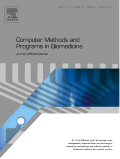
Computer Methods and Programs in Biomedicine
Transforming Healthcare with Innovative Computational Solutions.Computer Methods and Programs in Biomedicine, published by ELSEVIER IRELAND LTD, is a leading journal at the intersection of computer science and biomedical research. With an impressive impact factor evidenced by its Q1 rankings in multiple categories—Computer Science Applications, Health Informatics, and Software—this journal ranks highly among peer publications, showcasing its significance in advancing interdisciplinary research. Covering a wide array of topics since its inception in 1985, it is particularly crucial for those invested in the innovation of computational methods applied to the biomedical field. The journal has established a strong reputation, with Scopus rankings placing it in the top percentiles across its relevant sectors, including the 14th position out of 138 in Health Informatics. Researchers, practitioners, and students looking to explore current trends, methodologies, and advancements in biomedical applications of computer science will find this journal an invaluable resource.
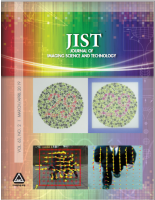
JOURNAL OF IMAGING SCIENCE AND TECHNOLOGY
Illuminating Innovations in Imaging TechnologiesJOURNAL OF IMAGING SCIENCE AND TECHNOLOGY, published by I S & T - SOC IMAGING SCIENCE TECHNOLOGY, is a pivotal resource in the realms of imaging science, optics, and materials. With its ISSN 1062-3701 and E-ISSN 1943-3522, this journal has been disseminating influential research since 1993 and continues to be a vital platform for scholars up to 2024. Despite its varied quartile rankings across disciplines—such as Q4 in Atomic and Molecular Physics and Optics, and Q3 in Chemistry (Miscellaneous) and Electronic, Optical and Magnetic Materials—it provides an essential forum for innovative ideas and advancements. The journal’s focus on interdisciplinary connections encourages collaboration among researchers in the fields of chemistry, computer science, and physics. Researchers, professionals, and students interested in exploring the latest imaging technologies and methodologies will find invaluable insights within its pages, making it a significant addition to their academic libraries.
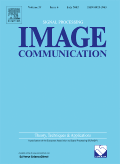
SIGNAL PROCESSING-IMAGE COMMUNICATION
Exploring the Synergy of Vision and CommunicationSIGNAL PROCESSING-IMAGE COMMUNICATION, published by Elsevier, is a leading journal in the fields of Computer Vision, Signal Processing, and Electrical Engineering. With an impressive range of Quartile rankings in 2023, including Q1 in Electrical and Electronic Engineering and Q2 in Signal Processing, this journal is vital for researchers and professionals seeking the latest advancements and comprehensive studies in image communication technologies. Issued in the Netherlands, SIGNAL PROCESSING-IMAGE COMMUNICATION has been an essential resource since its inception in 1989, fostering innovation and collaboration among academia and industry. The journal provides a platform for high-quality peer-reviewed research, addressing significant challenges and solutions in the convergence of image processing and communication. Although currently not an Open Access journal, it offers subscription options that ensure a broad dissemination of groundbreaking knowledge. With a robust reputation reflected in its Scopus ranks, this journal serves as an indispensable reference for students and experts aiming to stay at the forefront of developments in this dynamic field.

Journal of Imaging
Connecting Disciplines Through Cutting-Edge Imaging StudiesThe Journal of Imaging, published by MDPI, is an esteemed open-access journal dedicated to advancing the fields of Computer Graphics, Computer Vision, and Electrical Engineering. Since its inception in 2015, this journal has established a significant presence in the academic community, reflected by its impressive rankings in Scopus, including a Q2 quartile in multiple categories such as Computer Vision and Pattern Recognition and Radiology. With a commitment to disseminating high-quality research, the journal offers a platform for innovative studies and practical applications, making it an essential resource for researchers, professionals, and students alike. Operating from its base in Basel, Switzerland, the journal continues to promote scholarly work that pushes the boundaries of imaging technologies, while contributing to the global discourse in its respective fields. The open-access model ensures that valuable research is readily available, fostering collaboration and knowledge-sharing across disciplines.

MACHINE VISION AND APPLICATIONS
Driving Excellence in Computer Vision Scholarship.MACHINE VISION AND APPLICATIONS is a distinguished peer-reviewed journal published by SPRINGER, serving as a vital platform for innovative research in the fields of computer vision, pattern recognition, and their applications within hardware and software systems. Since its inception in 1988, the journal has been at the forefront of disseminating cutting-edge findings and advances in machine vision technologies, significantly contributing to the global academic discourse. With an impressive track record, the journal ranks in the Q2 category across various domains in the 2023 Scopus rankings, reflecting its esteemed position in Computer Science Applications, Computer Vision and Pattern Recognition, Hardware and Architecture, and Software. Although it does not currently offer open access options, MACHINE VISION AND APPLICATIONS remains a critical resource for researchers, professionals, and students eager to explore emerging trends and methodologies in the rapidly evolving landscape of machine vision.
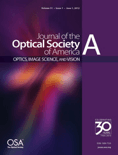
JOURNAL OF THE OPTICAL SOCIETY OF AMERICA A-OPTICS IMAGE SCIENCE AND VISION
Illuminating the Frontiers of Optical ScienceJOURNAL OF THE OPTICAL SOCIETY OF AMERICA A-OPTICS IMAGE SCIENCE AND VISION, published by Optica Publishing Group, is a leading journal in the fields of optics, image science, and vision. With a rich history dating back to 1979, it serves as an essential platform for disseminating cutting-edge research and developments from 1984 to 2024. The journal covers a wide array of topics, including atomic and molecular physics, electronic and optical materials, and pattern recognition in computer vision. Its prestigious categorization in the Q2 quartile for Atomic and Molecular Physics and Optics and its Q3 rankings in Computer Vision and Medical fields indicate the high-level contributions it fosters within the scientific community. Researchers will benefit from its commitment to rigorous peer review and its role in advancing knowledge at the intersection of science and application. Although it is not an open-access journal, the quality of content attainable here is invaluable for academics, industry professionals, and students eager to explore the forefront of optical science.